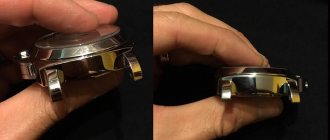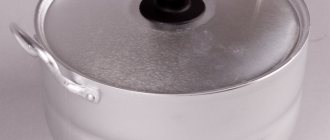How to choose the right device
Whatever type of blender you choose, do not forget about the general rules. It is necessary to select the power, taking into account what the blender is needed for.
If you are only going to grind soft products, then a model with low power will do. And if you plan to work, for example, with raw meat or ice, then focus on models with high power.
In any case, the choice is quite wide. The power of various models ranges from 200 W to 1000 W.
It is also better to choose a device with a large number of speeds. Basically, the number of speeds for blenders ranges from 2 to 5. It is advisable to have a turbo mode, designed to increase the operating speed for a while. Pay attention to sound insulation. You don’t want to make a lot of noise in the kitchen in the morning and wake up the whole family.
It is of great importance to have an automatic shutdown function in case of overheating or improper operation. The variety of knives indicates the greater efficiency of the device, since with the correct selection you can significantly reduce the time you use the device.
So, we figured out what the device in question is used for, and came to the conclusion that using a blender in the kitchen greatly simplifies the cooking process for housewives. Therefore, if you still decide to purchase this household appliance, arm yourself with our advice and feel free to go buy the model you like.
What can you cook in a blender?
Using a blender you can prepare a huge number of dishes:
- puree soups;
- cocktails;
- sauces;
- salads;
- various desserts.
Here are some of the most popular dishes and the general principle of preparing puree soups.
The principle of preparing puree soups using the example of cream of mushroom soup
To prepare mushroom cream soup from champignons, you need:
- 500 grams of potatoes of any size.
- 150 grams of onion.
- 600 grams of water.
- 250 grams of mushrooms (fresh or frozen).
- 200 grams of cream 10-20% fat.
- salt (at your discretion).
First, finely chop the onion into cubes and fry in refined vegetable oil for 5 minutes at medium temperature until golden brown.
Mushrooms are cut into medium pieces (you can cut several pieces lengthwise “in the shape of a mushroom” for decoration). Chopped champignons are added to the fried onions and fried together for 7-10 minutes to enhance the taste and aroma.
Next, place a pan of water on the stove and prepare the potatoes (peeled and cut into the size of a walnut). After boiling, the potatoes are thrown into the water and cooked until tender for about 15 minutes.
Then add the onion-mushroom mixture to the pan and cook for another 5 minutes, and then grind the pieces of vegetables in the soup with a blender until pureed.
The last step is to add cream to the prepared mixture and bring to a boil, stirring. The dish is decorated with pieces of fried mushrooms and herbs.
The general principle for preparing all such soups is to grind the solid ingredients to a homogeneous puree-like mass, and the base of the soup can be anything: vegetable, as in the presented recipe, or broth.
Curd
The recipe for making curd mass is extremely simple.
To make the curd mass, you need:
- about 500 grams of cottage cheese
- 4-5 large spoons of sour cream
- salt and sugar to taste
Proportions are approximate and may vary. Also, if desired, you can add various berries and jam.
An immersion blender works best for preparing this dish. All ingredients are loaded into a bowl and ground until smooth within 2-3 minutes.
Operating rules
If you want the device to work for a long time and perform its functions efficiently, you need to follow the instructions given in the user manual.
- The device must be assembled correctly and all parts must be secured. Make sure the blade is securely attached to the cup. The jug must be securely installed in the motorized base. An incorrectly assembled blender simply will not work. Sometimes loose parts can fly out and damage the device.
- The device must not be used for mixing non-food products. This may damage it irreversibly.
How to clean the device
After use, fill the carafe with warm water and add a few drops of liquid dishwashing detergent. Turn on the appliance and whisk until the carafe becomes completely foamy. First you need to make sure that the lid is tightly closed. If it comes off, there will be water everywhere! The soap mixture must be drained and the jug rinsed until completely clean.
Lemon helps to remove stains. The jug is filled with water with a few drops of detergent. Then coarsely chopped half a lemon is added. Everything is whipped for one minute. You can use vinegar instead of lemon. The effect will be the same.
To clean stubborn stains, it is better to use a rough sponge, steel wool, or a toothbrush. It all depends on the degree of contamination of the substance.
If the device is very dirty, you need to soak it overnight. To do this, make a mixture of baking soda (0.5 tbsp), vinegar (1 tbsp), detergent (5-10 drops). Pour the mixture into a decanter and leave for several hours. Then pour the contents into the sink and rinse the jug until completely clean. Additionally, you can rinse again with detergent under running water.
Invert the jug and place on a wire rack to dry. It must be allowed to dry completely, otherwise it will create an environment for bacteria to grow.
Cleaning the database
The base cannot be washed! It contains an electronic motor and a device control system. You need to take a sponge or towel, soak it in warm, soapy water and wipe all the places where food or liquid has been spilled.
The base must be cleaned immediately after using the device. Avoid allowing food and liquids to dry out.
To clean the control buttons, you need to use cotton swabs. They should be soaked in an alcohol solution. It will dissolve stuck particles and quickly evaporate.
Cleaning the Blades
The removable blades must be unscrewed from the bottom of the jug. Hand wash with hot water and soap. Then scrub with a sponge or toothbrush to remove any hard debris.
Fixed blades can be cleaned in a carafe. To do this, just pour hot water and add a few drops of polydent. It is a whitening and antibacterial agent.
The gasket must be washed, dried and lubricated with olive or vegetable oil.
Main functions
If we consider the simplest option without additional attachments, then this device has only 3 tasks: chop, beat, mix. Undoubtedly, the question may arise about why you need a blender if you have a meat grinder and a mixer. With their help, you can grind products or beat them into a homogeneous mass. Mixing by hand works well too.
Of course, every housewife must decide for herself whether a blender is needed in the kitchen. But no cocktail made by hand will turn out so smooth and tasty. Especially if the ingredients include solid components (ice, fruits or berries). A meat grinder is a good and necessary thing, but it will never make puree. And not a single mixer in the world will make the curd mass for a royal cheesecake or the filling for an open pie so homogeneous.
How to use?
Be careful when using an immersion blender. First, keep in mind that the device is not omnipotent. Bones and too hard foods should be removed before chopping. Blenders have at least two rotation speeds. To find the right speed, follow the empirical path - start with the minimum and work your way up.
The equipment is very simple to operate. Powered by mains, fits comfortably in the hand, easy to operate. To avoid unpleasant situations, immediately use dishes with high walls so that food does not scatter throughout the kitchen.
Why do you need a blender in the kitchen: functions and application features
Expert opinion Maria Vasilievna Mikhailova Manager of a furniture store. Knows everything about comfort and interior design
Currently, there are a large number of types of household appliances on the market. However, many devices still continue to cause some confusion.
For example, why a blender is needed in the kitchen is still not clear to everyone. Many people think that this device is exclusively for cocktail lovers and young mothers.
However, this is not at all true. There are tons of other features that a blender has.
History of creation
The inventor of the first blender is Stephen Poplawski, an American-born inventor. This happened in 1922. He created the device to mix carbon dioxide, syrup and water to produce carbonation. Poplawski's compatriot Fred Osius improved the idea in 1937 and proposed a new version of this device that could crush food. Swiss Roger Perinjaque created a hand-held version of the blender in 1950, which has become a must-have piece of equipment in the kitchens of professional chefs. It was then that the new household appliance began to become widespread throughout the world.
The advantages of a blender are important for choosing it
A blender is similar in purpose to a mixer and a stationary chopper, but has a number of obvious advantages.
- Firstly, the blender is small in size;
- Secondly, due to its small size, the blender is easier to get and use;
- Thirdly, it does not require special containers. You can grind food in simple kitchen utensils (saucepan, bowl, tall glass).
- Fifthly, it is very easy to care for and very convenient to wash. No need to disassemble or remove knives.
- Sixthly, in our crowded kitchen, the blender will not take up much space.
Grinding with a blender
Coffee beans
The versatility of the blender is the reason why many people want to purchase it; When combined with a multicooker, these two devices can completely reduce the full use of pots to nothing. A blender can quite successfully replace a coffee grinder, successfully grinding beans of any size, but it still requires careful work and adherence to basic rules:
- If you are grinding large grains, it is recommended to regularly stop the operation of the device and shake the bowl so that the pieces do not fall into the space between the knives; if there is a pulse operation function, it should be used;
- Activate only the lowest gear; as practice shows, even small blade strokes per minute are quite enough for high-quality chopping;
- Even if the device confidently works with grains of different sizes, it should still be stopped, since after 5-6 minutes of intensive work the knives will begin to get very hot, and the grains will absorb a metallic smell.
Meat
It is possible to grind meat using an immersion blender, however, even here you should handle the device correctly: in no case should you overload the bowl, since otherwise the knives (and the space around them) will be clogged with fibers and fatty deposits, which will be very problematic to separate.
Despite the fact that the most powerful blenders are now capable of dealing with large pieces, being a full-fledged replacement for a food processor, it is recommended to pre-prepare the meat by cutting it into 2-4 cm cubes - this is the optimal size, suitable for processing both stationary and submersible blender.
By the way, for working with pork and beef (tougher meat products), many manufacturers produce additional attachments:
- Grinding type, which is suitable exclusively for preparing minced meat;
- Shaped, which are useful for quickly slicing meat, for example, for navy-style pasta, soups and other dishes that require more or less solid meat that holds its shape;
- Shredders, which turn pieces of meat into long and thin plates, which are used in preparing, for example, Beef Stroganoff.
Vegetables: onions, tomatoes, etc.
Using a blender to chop vegetables is, in principle, no different from using it to chop meat or other solid foods. The only rule to follow is to never grind vegetables with meat, as they have different hardness and each ingredient requires a different time.
As practice shows, vegetables are quickly chopped in any blender gear, but the selection must again be manual; the use of automatic programs is justified when mixing and preparing any cocktails when working with already chopped ingredients.
Additional attachments
Mid-range and premium models come complete with one or several additional attachments, which are designed to make the device easier to use and more convenient. Information about their availability with a particular device can be found both on the Internet on the manufacturer’s website and on the device box itself.
Dough and puree attachments
Such attachments have one goal: to prepare a particular product with a uniform consistency and without lumps. If the attachment for making purees is, in principle, universal, and manufacturers do not deviate from verified standards in its manufacture, then two types can be supplied for kneading dough:
- A whisk attachment, which is a rounded device for mixing dough in the form of several curved thin metal plates. Due to this, the dough (or cream) is saturated with air, which contributes to its rapid rise and fluffiness;
- The hook attachment is designed for much larger volumes of dough, and it is intended exclusively for high-power devices that are good at handling more than one kilogram of loaded product.
Cutter attachments
This category includes numerous knife attachments of various shapes, which help cut products in a certain shape: cubes, slices, slices (thin plates). This also often includes a classic grater, which looks like a disk, but has pointed holes on the sides. These holes, like those found in the attachments listed above, may differ in size, and therefore some manufacturers include several of the same type, but of different sizes, for the gadget.
Filter attachment
The simplest of all attachments, which is a regular sieve needed to separate the resulting juice from the pulp. After grinding a particular product, the resulting juice flows into a separate bowl, and the processing residues are collected on a filter, from where they can then be easily removed for reuse or disposal.
Baby food
Parents of the 70s, 80s and even 90s of the last century remember very well what it cost them to prepare the first complementary foods for their babies. Vegetables, meat, and soups had to be cooked first, carefully choosing only the best products. And then all this was manually ground through a metal sieve. And all just to treat your child with a teaspoon of puree. They grated apples using a fine grater, damaging their fingers and nails. And in the end, they ate most of the mass themselves (the good stuff shouldn’t go to waste). Some dared to buy ready-made puree, although who knows what was actually put in there. And all because they didn’t know how to use a blender. More precisely, they basically didn’t exist then.
In fact, everything is extremely simple: you need to cook the food, add a little salt, and then grind it in a blender. It will take literally a minute - and the puree is ready, be it meat, vegetable or fruit. By the way, porridge can also be chopped in ready-made form.
Broccoli soup
This very tender creamy dish is not only tasty, but also healthy. And the recipe for its preparation allows you to understand why you need an immersion blender. For a large head of broccoli you will need a glass of light cream, 2 onions, a clove of garlic, 750 ml of milk or broth. You also need cheese (100 grams), blue mold is ideal, but regular Dutch cheese will do just fine, a little salt and butter, and herbs.
Place a saucepan with a thick bottom on the fire. Melt the butter, fry the peeled and chopped onion, as well as chopped garlic. The vegetables should become soft. Broccoli, disassembled into inflorescences, milk or broth, is also sent there, and then boiled for about 20 minutes. At the end, add salt, cream and cheese to the soup, boil for another 10 minutes, remove from heat and, after cooling a little, beat with a blender. Serve with slices of fresh bread, garnished with herbs.
Advantages and disadvantages
The design of a blender has advantages and disadvantages.
The advantages of the device include:
- Functionality This is what seduces you when choosing an immersion blender. Using different attachments allows you to expand your options in the kitchen.
- Size Compared to the same stationary blender, an immersion blender is much more compact. It is also convenient to take to outdoor events.
- No need to purchase additional dishes. You can use an immersion blender in any container. But remember - choose higher walls so as not to splash the kitchen.
- Easy to use It doesn't take much effort to figure out how it works. The attachments are changed easily and quickly, and their care is very simple.
- Adjusting the Position There are some exceptions to chopping or beating foods. So with an immersion blender you can easily adjust the angle of inclination.
about the disadvantages of an immersion blender:
- You need to hold it in your hands. At first glance, such an insignificant minus. But if you whip cream with an immersion blender... You'll have to try.
- It is difficult to obtain a uniform consistency. The human factor plays a role here. If you can load ingredients into a stationary blender and it will automatically grind the contents, then with a submersible blender you need to carefully monitor the process so as not to miss anything.
- Doesn't always cope with hard products. This is more a question of attachments. We have already described which attachment is needed and why. But if they can’t cope, it’s better to purchase special-purpose equipment. For example, in a coffee shop it is better to use a coffee grinder to grind beans, rather than a blender with a glass.
Material
Material of the housing where the engine is located
Available in plastic or metal.
Like most kitchen appliances, blenders are primarily made of plastic. This is a modern, lightweight and budget material that is easy to care for.
Premium models, traditionally, are clad in metal: matte (usually aluminum) or chrome-plated (stainless steel). If the minimum time spent on maintaining your equipment is important to you, then it is better to give preference to a matte finish, on which fingerprints or food drops will be less noticeable.
For those who want to choose a device that fits into the interior of the kitchen, manufacturers produce blenders in different color shades. They can be made of either plastic or painted metal.
Material of the bottom of the hand blender
It is desirable that it be metal, then you can immerse the blender even in a pan of boiling soup. Plastic can only handle moderately hot and warm foods, and it can break if dropped and wear out over time.
Stand blender jug material
There are four options: glass, plastic, metal or composite material.
— Plastic is good because it is lightweight, easy to handle, reduces the cost of the device, but it tends to scratch and it is not recommended to process hot products in it.
— A glass jug is heavier and can break if dropped. But its important advantages are environmental friendliness and the ability to work with hot products. In terms of aesthetics, it will look perfect for many years, as it is practically scratch-resistant.
— The metal version is good in terms of ecology and reliability, but it is opaque. This means that you will not be able to visually control the process.
— Almost ideal, in many respects, is a jug made of a composite material, for example, Tritan. It is light, comfortable, durable, heat-resistant. The only negative is the higher price compared to others.
Methods of application and areas of use
An immersion blender and a stationary blender are varieties of the same device, but their areas of use and methods of application differ. Some of their functions are similar, but their effectiveness when performing such tasks, for example, preparing pureed soups, is different. To choose the optimal device for your needs, you need to understand the purpose of this technology.
Immersion blender
An immersion blender is equipped with a large number of attachments and for this reason is a more versatile device. It is purchased if you need equipment that can perform many different tasks.
To understand how the device can be used, it is worth understanding the purpose of its attachments, which, depending on the model and configuration, may include:
- Main leg. Used in the measuring cup included in the kit or in any container. It is used to mix sauces, baby food, pureed soups, and cocktails.
- Whisk attachment. Designed for making cream, beating eggs, batter, cream. Some models have nozzles with two whisks.
- Hooks. Designed for kneading dense dough or mixing minced meat with spices and onions.
- Chopper. Bowl with a knife inside. Used for chopping herbs, vegetables, fruits, boiled meat, cheese, chocolate, preparing vegetable puree or pate. Can be equipped with an ice pick.
- Multifunctional bowl with chopping blade and discs for slicing food. It has an increased volume compared to a conventional chopper and is suitable for processing a larger number of products. In addition, it may include grater knives, shredders, and a dicing attachment. Suitable for quick preparation of Olivier-type salads and preparations for the winter.
- Leg for mayonnaise. Used for making mayonnaise and sauces. Compared to other attachments, it is much less common.
- Attachment for mashed potatoes. A regular attachment will not cope with this dish - you will end up with a non-uniform sticky mass with lumps.
Thus, immersion blenders are universal equipment that can replace many other devices and accessories at home. Devices of this type become excellent assistants for young mothers, helping them prepare food for small children. These same devices are effective in the country, where they allow you to prepare vegetables, herbs, as well as berries and fruits for the winter to mix with sugar.
Stationary blender
In a stationary blender, cooking takes place in a glass, plastic or metal jug with blades. This device is perfect for lovers of pureed soups, smoothies, cocktails, and fans of healthy eating. It will provide better results in comparison with an immersion blender that performs similar functions, due to its higher power and operating principle.
In the jug of a stationary blender, the blade has two to four blades curved at different angles. This allows you to grab food even from the bottom of the bowl and does not leave unprocessed ingredients. The foot of an immersion blender will not achieve this result.
A stationary blender is good for crushing ice. This is possible due to high power, as well as pulse mode or ice crushing mode.
In addition to the bowl, a stationary blender, depending on the model and brand, can be equipped with other attachments:
- mini chopper. Performs the same functions as a similar attachment in a stationary blender;
- mill. Designed for grinding coffee, cereals, sugar or other solid ingredients;
- juicer with mesh filter. A stationary blender can make juice, and the mesh will help clear the liquid from the pulp;
- Vacuumator This design allows you to pump out air from a container with a lid. It can be used to store food for a long time or marinate meat.
Additional attachments are found less frequently on stationary blenders than on submersible blenders. You can find them on expensive models, while advanced equipment is available on submersible devices, even if they are budget equipment.
Despite the fact that stationary and immersion blenders perform similar functions, their main purposes are still different.
The first type of technique is suitable for fans of a healthy lifestyle, lovers of cocktails, puree soups, and smoothies. When choosing such blenders, you should pay attention to the high power, material of manufacture and volume of the jug.
Immersion blenders can make life easier for young mothers, and are also suitable for housewives who need a universal device for performing different tasks. These devices are more functional; today you can buy equipment with extensive equipment even for a small amount.
Dishes
As has been said many times before, using a blender you can not only grind food, but also actually prepare complete meals. Yes, some of them will require special attachments, but this is a possibility. The following are the simplest dishes that can be easily made at home using a blender, no matter what configuration it has.
Sauces
Making sauces in a blender is one of the easiest and simplest kitchen tasks, and can be used either an immersion blender or a stationary one. The main thing in this case is not so much the choice of operating mode as the correct selection of proportions for a particular sauce.
For example, to make classic mayonnaise, you just need to mix half a glass of vegetable oil, one large or two medium eggs, half a spoon of sugar and salt and lemon juice in a bowl using a blender. Sauces of a more complex composition usually require more ingredients and subsequent boiling over a fire, for example, like the classic garlic sauce for pizza. To prepare it, mix 4 tomatoes, a clove of garlic, a mix of herbs to taste (for example, oregano and basil), several medium-sized peppers and olive oil in a bowl. After all the products have been mixed in the bowl, and the resulting mixture is homogeneous and free of any solid pieces, place it on medium heat for 5-7 minutes.
It should be noted that the simplicity and speed of preparing sauces using a blender is useful to the owner not only from the fact that you do not need to spend so much time cutting and crushing food yourself, but also from the fact that you can regularly pamper yourself with freshly prepared gravy with a new taste and aroma.
Salads and stews
Many agree that a blender is an ideal find for the everyday life of athletes and people leading a healthy lifestyle, because with its help the preparation of both “green” salads, which contain only vegetable vegetables, and classic ones with dressing becomes very fast, since You can quickly change the cutting and grating attachment to the one needed for whipping the sauce, and vice versa.
A “living” example would be a salad of shrimp and cheese, the ingredients for which require alternate use of all available gadget attachments:
- Squid for salad is ground into fine crumbs using an attachment with the smallest piece size;
- Boiled eggs (both whites and yolks) should be passed through a grater with small or medium-sized holes;
- Finally, at the lowest speed, the resulting mass is mixed with mayonnaise, garlic sauce and pieces of cheese.
Stationary devices are more suitable for stews, since they are equipped with attachments with holes of different diameters and shapes, and, for example, making a vegetable mixture will not only be nutritious and healthy, but also look interesting (which is important when feeding small children).
Minced meat for cutlets
Modern powerful models are capable of not only grinding fruits and vegetables, but also confidently handling harder products, such as nuts, ice or even chilled meat. It is clear that only stationary models can cope with such tasks, which are able to withstand the same grinding speed for a relatively long period of time.
However, here there are several nuances that must be taken into account when grinding:
- In any case, the meat should first be cut into pieces, at least roughly, as in the case of working with food processors;
- It is recommended to moisten the pieces with water or milk to make them a little softer. Although blenders are capable of making minced meat from frozen meat products, such a simple step will significantly reduce the grinding time;
- It is important to carefully monitor the operation of the device, since, unlike a meat grinder, it does not have an outlet, and possible processing will lead to the fact that instead of light minced meat, you will get a kind of porridge reminiscent of pate. It is for this reason that speed selection must be done manually, and in this case it is pointless to rely on automatic programs; they are selected for pieces of meat of a certain size and type.
Batter
Using a blender to prepare the dough significantly expands the boundaries of its composition, because in addition to the classic ingredients, you can also use additional ones, for example, apples, rice, cabbage or corn. It is for preparing dough that manufacturers add in addition to the devices various attachments described earlier: whisk attachments are suitable for liquid-type dough, and hook attachments are suitable for thicker and richer ones.
A classic dough recipe for any type of blender could be the following:
- Mix half a glass of milk in a bowl with two broken eggs and a pinch of salt;
- Using a blender, beat the mixture until it reaches a homogeneous consistency;
- Add sugar and baking powder, continuing mixing and gradually adding a glass of flour. At the end, add a spoonful of vegetable oil and stir for another 10-15 seconds.
Dessert dishes, cocktails
Desserts that can be made in a blender are usually either fruit and berry ice cream or smoothies. Both dishes are very simple to prepare; you just need to wash the ingredients first, and then mix them in a bowl until ready. Since blenders are usually purchased for preparing precisely these dishes, modern models have a lot of automatic programs aimed at preparing them quickly.
In addition to the above, it should be noted that the ice cream can be supplemented with chocolate or nut (for example, coconut or almond) crumbs, which can also be done using the device.
Some gadgets are even equipped with special portable bottles, inside of which food can be crushed; you just need to load the fruit inside, select the desired mode, and the device will make a cocktail inside such an improvised bowl. Different operating modes are designed for the owner to choose the consistency of the cocktails: for example, some are puree-like and thicker, while others are liquid.
Pickled products
The previously mentioned vacuum pump function is extremely convenient for marinating pickles and, for example, barbecue meat in half an hour to an hour. If the classic method of preparing a marinade requires it to sit for at least 5 hours, in this case the time is significantly reduced when using any ingredients and any meat, be it pork, poultry or beef.
First, using a blender, all additional ingredients are ground, for example, onions, herbs, sauce and any vegetables, after which the meat is added and this function is used.
Cream soups, puree
Mashed potatoes, along with fruit smoothies, are one of those dishes whose preparation has become much easier with the advent of blenders: devices of any type can confidently handle potatoes, and all that is needed to obtain a soft and tender mass is to choose the right speed and select the right attachment for the job. .
The thickness, fluffiness and tenderness of a dish is usually regulated in two ways: either by adding butter (less often, vegetable) oil, or by adding sauces (garlic or vegetable).











